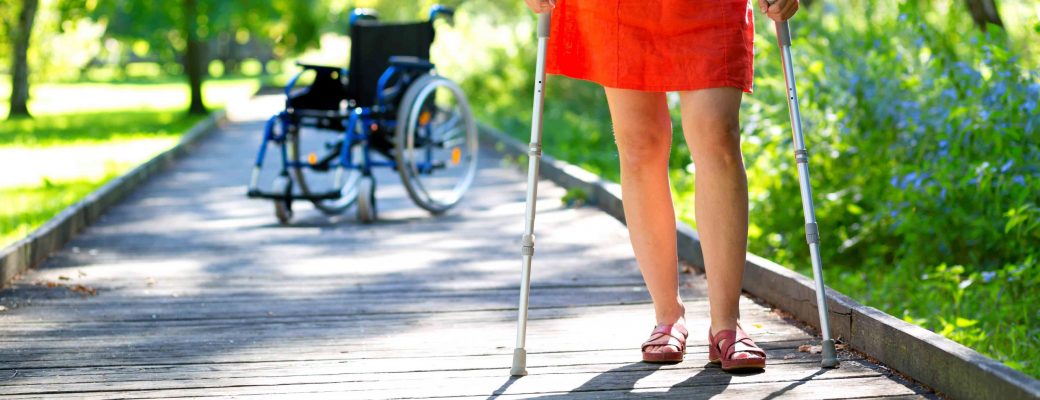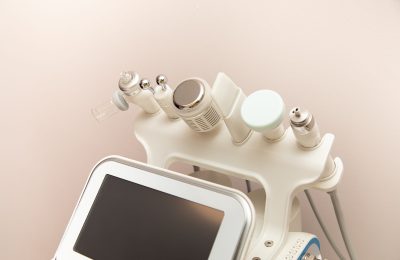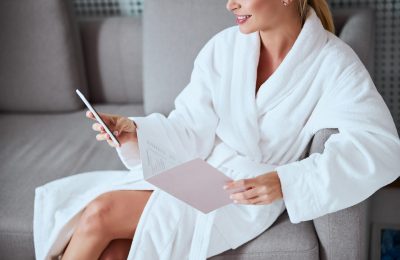Driven by a facilitated digitization of the world around us, the spa industry is currently evolving with advanced technologies in…
The importance of accessibility
Meenu Sikand, founder and CEO of Accessibility for All, is one of more than six million Canadians affected by a disability that limits their daily activities. She’s spent most of her life paralyzed and wheelchair-bound.
Like any other woman, the internationally acclaimed disability rights advocate loves to be pampered, but was discouraged in her search for a spa that understands what true accessibility means. “Real accessibility doesn’t just mean an ability to get through the door and assuming someone can move from one chair to another,” she says. “If they can’t get their treatment, it’s not accessible.”
Sikand suggests that spa owners look at their equipment and services from end-to-end, not just when a client enters the door. “Look at it not as charity but as a new customer base that you can acquire,” she explains. “More accessibility is good in general for everyone. Being inclusive is better for your bottom line and the industry as a whole.” Sikand would like to see the spa industry set a standard checklist across the board.
A starting point
Here are some of the questions Sikand asks: “Is the chair moveable? Do you need a sliding board to assist with transferring people onto your treatment tables? A lot of massage tables are not wide enough to enable someone to roll from side to side. Are there mechanical lifts? Are staff trained on transfers?”
Modifications don’t necessarily need to be onerous, and Sikand encourages spa owners to think outside the box. “Consider involving people with disabilities, the end users of the service, to help in auditing the spa for gaps in accessibility,” she advises. “Other suggestions include making sure the washrooms are accessible, developing customer service standards that encourage awareness of disabilities and training staff.”
A question of legality
In terms of legislation, several provinces are front-runners in developing local accessibility laws and regulations that protect and enforce the rights of people with disabilities. Ontario was the first province to introduce legislation specific to creating barrier-free places, passing the Ontarians with Disabilities Act (ODA) in 2005; since then, Manitoba and Nova Scotia have set their own laws, B.C. is close to ratifying its act and voters in Saskatchewan and the Yukon are putting pressure on their respective governments to follow suit. The federal government caught up this spring, passing Bill C-81, the Accessible Canada Act, which focuses on organizations under federal jurisdiction. Although many of these laws were originally written to govern public spaces, a number of Canadian spas have taken up the call, posting their own policies on accessibility, and constructing facilities that reflect those unique needs.
Among them, Ste. Anne’s Spa has a statement of commitment to accessibility, which stresses compliance across its operation under the province’s ODA: “Our commitment to making our organization accessible includes the integration of accessibility legislation with our policies, procedures, programs and training.” The spa’s HR director Cindy Smith explains, “Approximately 1.8 million Ontarians live with a disability, and as the population grows older, this number will continue to increase. Our organization has made a commitment to accessibility for everyone who uses our services because this makes good business sense, and it is also a legal obligation.” Canadian wheelchair athlete Joel Dembe recently indulged in a men’s facial and massage while at the spa, and he suggests in his blog that being wheelchair-bound was no barrier: “The moment we entered, we were embraced by the warm and friendly staff. They treated us like family, offering help at every turn.”
Although Alberta has yet to pass its own standalone legislation, facilities like the Red Earth Spa at Canada’s Banff Caribou Lodge have gone so far as to offer a fully accessible environment featuring lower sinks, roll-in showers and higher toilets with grab rails.
For Sikand, the landscape is promising as the population ages and has specific needs, greater spending power and growing awareness of barrier-free environments. “It is important for people with disabilities to feel beautiful, just like everyone else,” she says.
The Rick Hansen Foundation offers these tips for boosting accessibility in your spa.
Make a good first impression.
When people approach your business, ramps and automatic doors allow customers with mobility devices (and parents with strollers) to enter easily.
Clear the aisles.
Regardless of a person’s abilities, having a floor space free of obstacles allows any customer to move through the store easily and eliminates tripping hazards. When people can access all areas of your business, they’re more likely to have an enjoyable experience and spend more time there.
Be seen.
Signs using a 72-point, sans-serif font (e.g., Verdana, Arial) are easier to read, make navigation more straightforward and accommodate customers who are deaf or have low vision.
Ensure the washroom is accessible.
An accessible washroom has a door that is at least 85cm wide, a grab bar at the side and back of the toilet, an 80cm space beside the toilet and a turning radius of 1.2m. You can provide even more space if the door on the bathroom stall swings out, instead of in.
Provide accessible print materials.
In addition to written text, having Braille on signage, menus and business cards will help people who are blind or have some form of vision loss. Also, include photos on your menus to make it easier for customers who may be deaf-mute to indicate what they would like to order.
Find the right light.
Adjust the lighting to meet and support the needs of your customers and employees. Although ambient mood lighting creates a casual or romantic setting, it might not be bright enough for customers to read menus, way-find or communicate if they use sign language. You can provide clip-on lights for greater illumination. Many tools are available online to help calculate the lighting required in a given space.
Consider the highs and lows.
Offer a variety of high and low tables to accommodate customers who use a wheelchair or scooter, or have other mobility challenges.
Offer flexibility at the point of sale.
Portable debit machines or an extendable cord give customers a more convenient way of paying, especially for individuals using wheelchairs or for those who aren’t tall enough to reach a fixed debit machine.
Open up to closed captioning.
Turning on closed captioning on any in-house TVs will allow customers who are hard of hearing or deaf to follow along with whatever program is on.
Arrange for sensitivity training.
Education is the best way to change attitudes and break down barriers for people with disabilities. Providing your staff with training on topics such as how to assist those with mobility devices, interact with service animals and other situations, will ensure that everyone is informed on how to accommodate and include all people.




